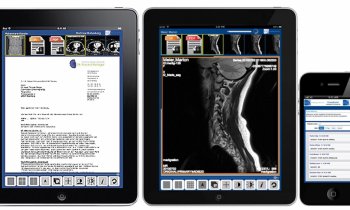Estonia leads the way in Baltic eHealth links
Tallinn, the capital of Estonia, boasts the country's third-largest hospital. East-Tallinn Central Hospital (ETCH) has 587 beds, 26,000 inpatients and last year recorded 425,000 outpatient visits.
It dates from 1785 when the former Tallinn Central began to operate as a town hospital. However, in 2001, four hospitals and two polyclinics were merged to form ETCH.

It has six clinics: internal medicine, obstetrics and gynaecology, long-term care, surgery, diagnostic, and opthalmic. About 1,850 employees work there, among them 255 doctors and 630 nurses. Its 2005 turnover was more than €30 million.
ETCH provides a wide range of healthcare services, including active care for inpatients and outpatients, as well as rehabilitation and long-term care. The hospital also provides a day surgery service and a 24-hour emergency department. It lacks only neurosurgery, cardiac surgery, nephrology and haematology services. More than 200 GPs, other hospitals and healthcare providers are buying ETCH’s services.
During the past three years much work has been done to develop the hospital information system (HIS). It now integrates all five hospital buildings, providing access to all electronic patient records except the diary. PACS (Picture Archiving and Communication System) for radiology was set up in 2003.
The hospital’s IT strategy extends the HIS into patient diagnosis and treatment. Over the next 10 years, it aims to establish a paperless hospital, to integrate other ancillary equipment with HIS and open patient data to GPs and other hospitals under the rules of the Data Protection Inspectorate.
ETCH utilises a web-based system called ESTER 3.4, provided and managed by a local software company. The same system is used by approximately 20 hospitals in the country and by using a local firm, the hospital enjoys the full flexibility to tailor HIS to its particular needs.
Design models are prepared by an internal group and sent to the software company, which programmes the HIS. The involvement of the hospital software group in process design and quality control keeps the HIS working reliably.
During the past years the growth of digital patient data has grown exponentially. Numeric and text data have been accompanied by imaging and bioelectric records that need greater storage capacity, along with dedicated software and hardware.
The question then arises about how far the hospital should develop its own HIS and which IT solutions should be either bought or outsourced. ETCH has decided that its system should not include PACS other than interfacing it with ESTER 3.4. In our view, PACS has to cover not only radiology images but also other medical images such as endoscopies, eye imaging etc. From 2003, ETCH has been an almost completely filmless hospital. This has had a positive impact on radiology images management. During our three years’ experience of using PACS purely for radiology images, we have seen that clinicians are also able to call up other images quickly and reliably.
Furthermore, their access to images should be seamless from HIS, so using different browsers for HIS, PACS or other data storage systems is not desirable. The idea of using electronic patient data is to give clinicians a holistic approach to their patients. Unfortunately, this frequently leads to complicated software solutions that are time-consuming and not user-friendly.
In our case there was one additional requirement for PACS. The hospital has been connected to the Baltic eHealth network. This allows the secure exchange of health data between approximately 200 institutions around the Baltic Sea area. As part of this project, ETCH has helped to develop a radiology pilot that includes exchanging images between Denmark, Lithuania and Estonia. We also provide an image storage service for the networked hospitals.
With these requirements in mind, ETCH recently opted to procure PACS. We chose the bid made jointly by Kodak Nordic AB and Medical Insight A/S, which includes PACS System5/Carestream 10, VIParchive and EasyVIZ. The solution will be integrated with our HIS using ESTER 3.4. Kodak VIParchive’s image management system will provide archiving for all medical images including non-radiological. Virtually separated sub-archives would allow other healthcare providers to use them.
In the hospital, clinicians can access images through HIS using an integrated Kodak web solution. They can use a wide range of viewing tools, including orthopaedic software for implants and its quick and user-friendly data management permits access to reports and images on one browser.
To access remote radiology examinations outside the hospital HIS is integrated with EasyVIZ. This program uses streaming technology for image transmission, which needs less network capacity than conventional systems.
For radiologists, the use of dedicated PACS workstations offers fast image processing and lets them create personalised work lists. Our PACS system sends images to others throughout Estonia, thanks to the foundation created by the country’s two biggest hospitals - Tartu University and North Estonia Regional.
Two PACS servers, about 200km apart, use the same operating software and their databases are synchronised. Most Estonian hospitals send images to this central PACS, from where they can be viewed by radiologists, GPs and others with access rights.
ETCH has become one of the fastest-growing hospitals in Estonia. The growth and development of its organisational culture has meant that in three years six different healthcare institutions successfully became a single integrated unit with clear views and future objectives. A key factor is the wide use of IT solutions in all hospital processes. We have chosen which solutions should be programmed locally and which should be outsourced. In implementing our PACS solution, we have found a successful balance between commercially available products and a locally tailored HIS. This was achieved by customer-focused co-operation between Kodak Nordic Health Group, Medical Insight and the East-Tallinn Central Hospital.
27.12.2006









